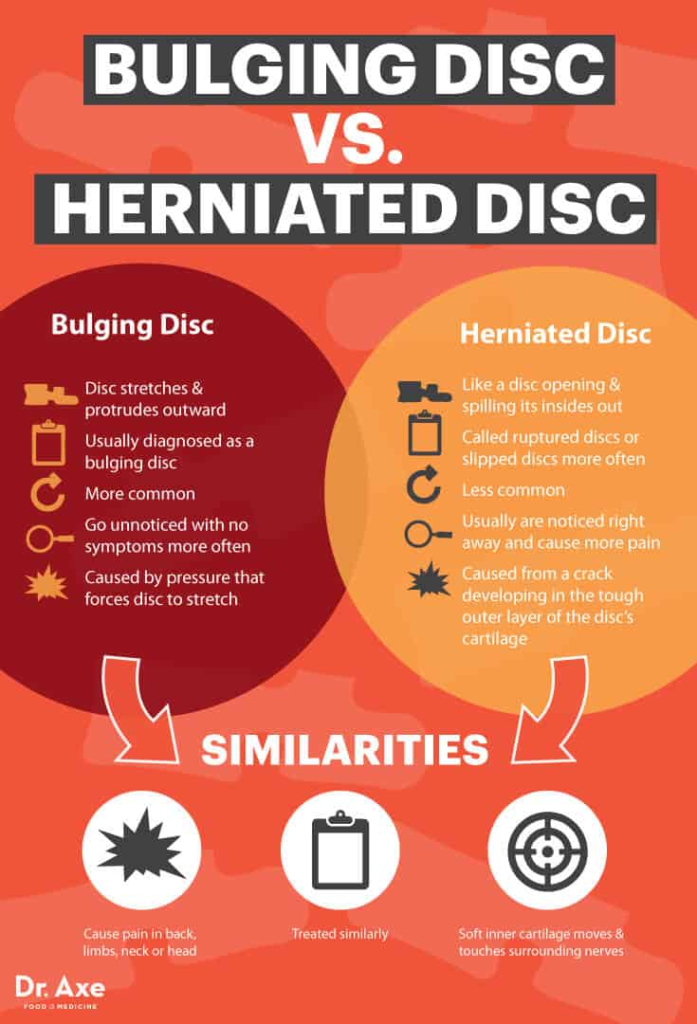A bulging disc is a condition in which a disc loses its original shape and expands (bulges), which can place pressure on a surrounding nerve root and cause pain. A bulging disc in the lower back can progress into a herniated disc over time.
Discs are gel-filled pads that cushion the individual vertebrae of the spine, acting like shock absorbers and allowing movement and flexibility of the vertebrae. Sometimes, spinal discs are likened to a jelly donut with a central softer component (nucleus pulposus).
When a disc “bulges,” part of its tough outer wall can protrude into the spinal canal and press on a nerve, which causes pain. Depending on which nerve is pressed by the disc, the pain can appear in a leg, arm, or elsewhere. When this type of pain develops, especially after an accident or injury, it is important to consult your pain doctor.
There are three different distinctions for disc problems:
- Disc protrusion: The disc’s outer wall remains intact, and the disc protrudes 180 degrees or less of the disc’s circumference.
- Bulging Disc: The disc’s outer wall remains intact, and the disc protrudes more than 180 degrees of the disc’s circumference.
- Herniated disc: A bulging disc’s outer wall tears and allows the inner fluid to escape.
A majority of disc injuries occur in the lumbar (lower) region of the back because the lower back bears most of the torque and force of daily movements. About 10% of disc injuries affect the upper portion of the spine.
It is also important to note the difference between a bulging disc and a herniated disc. A damaged disc may bulge, pushing into the spinal canal and causing pain. However, a bulging disc has not broken through the disc’s outer wall (ruptured). If the outer layer of the disc tears and the soft inner part of the disc leaks out, the result is a “herniated disc.” It is important to know that a bulging disc may become a herniated disc. Herniated discs can occur in any part of the spine but are more common in the lower back (lumbar spine).
Causes of a Bulging Disc
Spinal discs absorb the wear and tear that is placed on the spine. Over time, the discs start to degenerate and weaken. The most common location for bulging discs is between the fourth and fifth lumbar vertebrae in the lower back. This area continually absorbs the impact of bearing the upper body’s weight. The lower back is also critically involved in the body’s movements throughout the day, such as twisting the torso (rotating side to side), bending, and lifting.
Degenerative disc disease is the most common cause of a bulging disc, which can result in spinal osteoarthritis. Other factors that can cause or contribute to bulging discs include:
- Strain or injury.
- Obesity.
- Smoking.
- Poor posture.
- Inactivity.








